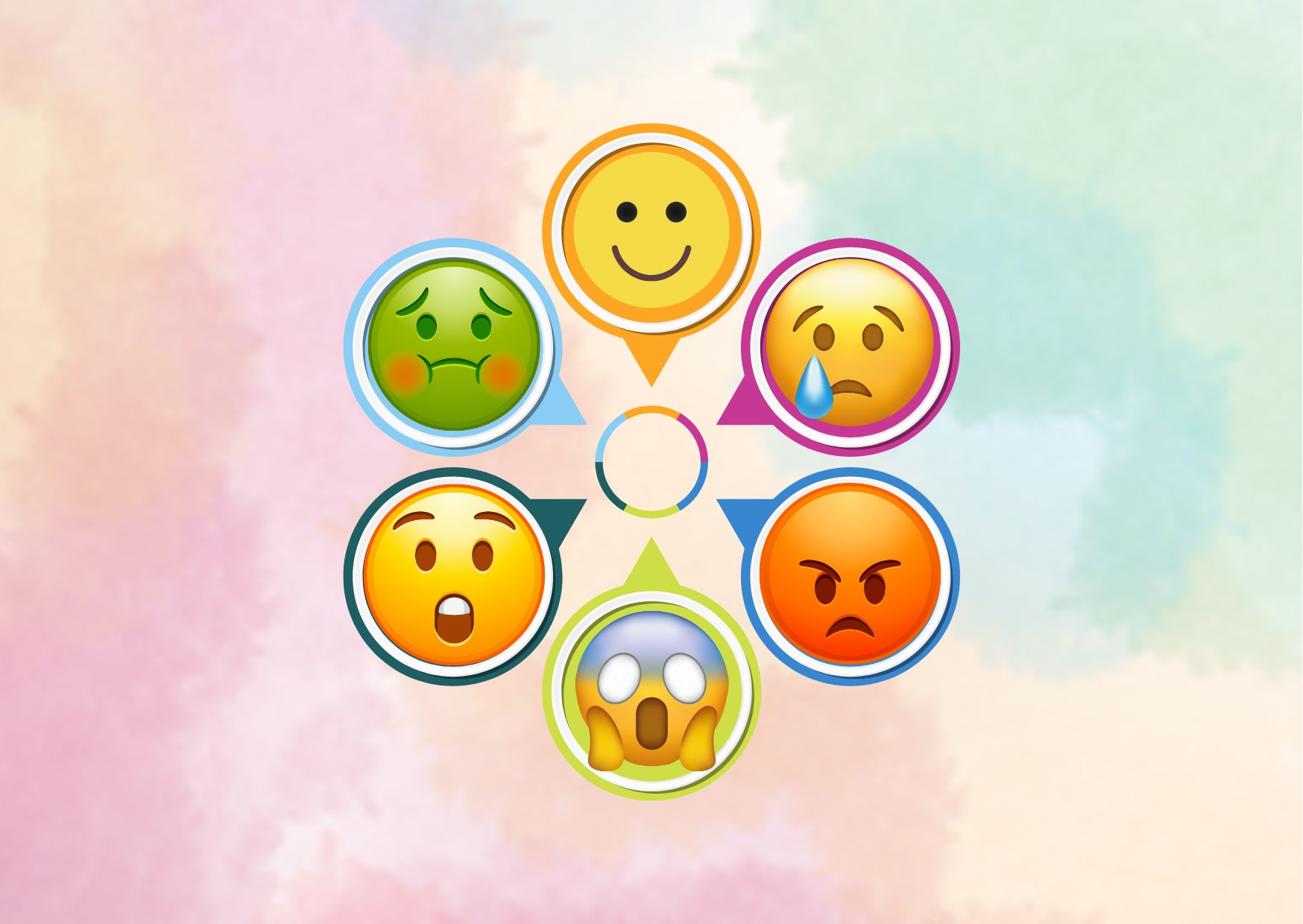Understanding the 6 Basic Emotions: A Comprehensive Guide
In our daily lives, we experience a wide range of emotions that profoundly shape our perceptions, behaviors, and interactions with others. These basic emotions – joy, sadness, anger, fear, surprise, and disgust – are universal human experiences that transcend cultures and backgrounds. By understanding the core characteristics and underlying mechanisms of these fundamental emotional states, we can gain valuable insights into the intricacies of our emotional lives and how they influence our overall well-being.
This comprehensive guide delves into the fascinating realm of basic emotions, exploring their nature, neuroscientific underpinnings, cultural nuances, and practical implications. We will examine the influential work of Paul Ekman, a pioneer in the study of emotions, and his identification of the six basic emotions. Additionally, we will explore dimensional models that offer alternative perspectives on the structure and classification of emotional experiences. The guide also addresses the complex interplay between basic emotions and more intricate emotional states, shedding light on the debates surrounding this topic. Ultimately, this resource aims to provide a holistic understanding of basic emotions, equipping readers with the knowledge to navigate their emotional landscapes more effectively.
What are Basic Emotions?
Basic emotions are fundamental emotional states that are believed to be universally experienced and recognized across cultures. During the 1970s, psychologist Paul Ekman identified six basic emotions that he suggested were universally experienced in all human cultures. These emotions are:
The Six Basic Emotions According to Paul Ekman
- Happiness
- Sadness
- Disgust
- Fear
- Surprise
- Anger
Ekman’s theory proposed that these six emotions are biologically hardwired and have distinct facial expressions that are universally recognized, regardless of cultural background.
Dimensional Models of Emotion
An alternative perspective on basic emotions is provided by dimensional models, such as the “wheel of emotions” proposed by psychologist Robert Plutchik. According to this theory, emotions can be combined to form different feelings, much like colors can be mixed to create other shades. The more basic emotions act as building blocks, with complex or mixed emotions being blends of these fundamental emotional states. For example, basic emotions like joy and trust can be combined to create love.
Neuroscientific Perspectives
Recent neuroscientific research has challenged the traditional view of a limited set of basic emotions. A 2017 study published in the Proceedings of the National Academy of Sciences identified 27 distinct categories of emotion. Rather than being entirely distinct, however, the researchers found that people experience these emotions along a gradient.
The study suggests that there may be far more basic emotions than previously believed, and that emotional experiences exist on a continuum rather than as discrete, separate states.
The Six Basic Emotions According to Paul Ekman
According to psychologist Paul Ekman’s influential research, there are six basic emotions that are universally experienced and recognized across cultures. These fundamental emotional states are biologically hardwired and have distinct facial expressions that are universally recognized, regardless of cultural background.
Sadness
Sadness is a transient emotional state characterized by feelings of disappointment, grief, hopelessness, disinterest, and a dampened mood. It is often triggered by experiences of loss, failure, or separation.
Happiness
Happiness is a pleasant emotional state defined by feelings of contentment, joy, gratification, satisfaction, and overall well-being. It is often associated with positive life events, achievements, or the fulfillment of desires.
Fear
Fear is a powerful emotion that plays a crucial role in survival. When faced with danger, fear triggers the body’s “fight or flight” response, preparing individuals to either confront or flee from the perceived threat.
Anger
Anger is a potent emotion characterized by feelings of hostility, agitation, frustration, and antagonism towards others. Like fear, anger can activate the body’s fight or flight response, preparing individuals to address or remove the source of their anger.
Surprise
Surprise is a brief emotion triggered by unexpected events or stimuli. It is characterized by a physiological startle response, which can be followed by either positive or negative emotions, depending on the nature of the surprising event.
Disgust
Disgust is an emotion that involves a strong aversion or revulsion towards certain objects, situations, or experiences. It can manifest through various physical reactions, such as turning away from the object of disgust, wrinkling the nose, or curling the upper lip.
These six basic emotions, as identified by Paul Ekman, are considered to be the fundamental building blocks of human emotional experience, serving as the foundation for more complex emotional states.
Circumplex Model
The circumplex model, proposed by James Russell, suggests that all emotions arise from two fundamental neurophysiological systems: valence (a pleasure-displeasure continuum) and arousal (alertness or activation). Each emotion is represented as a linear combination of these two dimensions, existing on a circular structure or “circumplex.” For example, excitement is characterized by high arousal and positive valence, while sadness is associated with low arousal and negative valence.
Vector Model
The vector model, introduced by Margaret Bradley and Peter Lang, proposes that emotions can be represented as vectors in a two-dimensional space defined by arousal and valence. In this model, emotions are characterized by their intensity (magnitude) and direction (positive or negative valence). The vector model suggests that there is an underlying dimension of arousal and a binary choice of valence that determines the direction of the emotional experience.
Positive Activation – Negative Activation (P.A.N.A.) Model
The P.A.N.A. model, developed by David Watson and Lee Anna Clark, is often considered a 45-degree rotation of the circumplex model. It defines two primary axes: Positive Activation (PA) and Negative Activation (NA). PA represents emotions like excitement, elation, and enthusiasm, while NA encompasses emotions like distress, fear, and nervousness. This model suggests that individuals can experience both positive and negative emotions simultaneously, leading to mixed emotional states.
Plutchik’s Model
Robert Plutchik’s model, often depicted as a “wheel of emotions,” organizes emotions into eight basic categories: joy, trust, fear, surprise, sadness, anticipation, anger, and disgust. These emotions are arranged based on their physiological purpose, with opposites placed across from each other (e.g., joy and sadness). The model also allows for the combination of emotions to form more complex emotional experiences.

